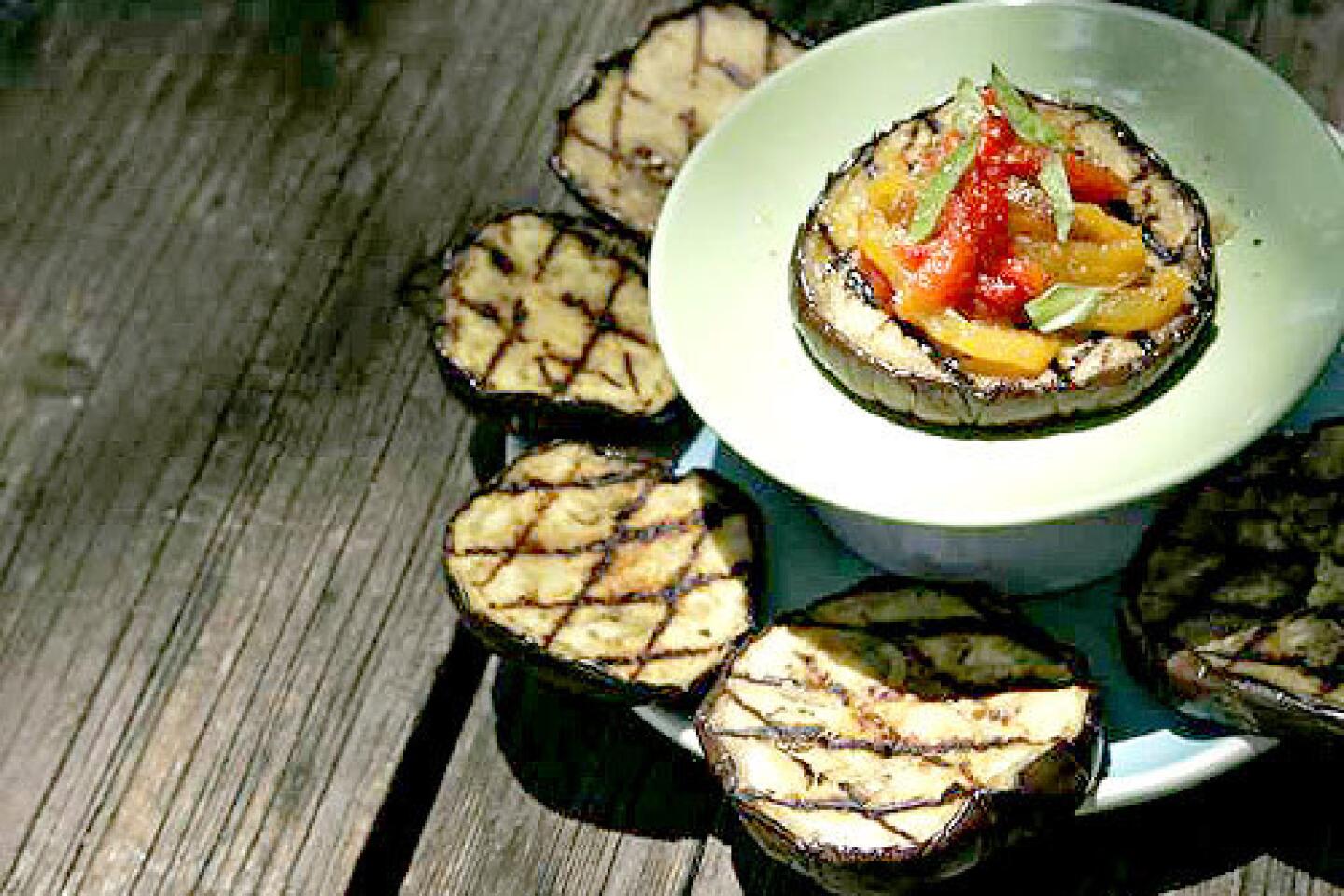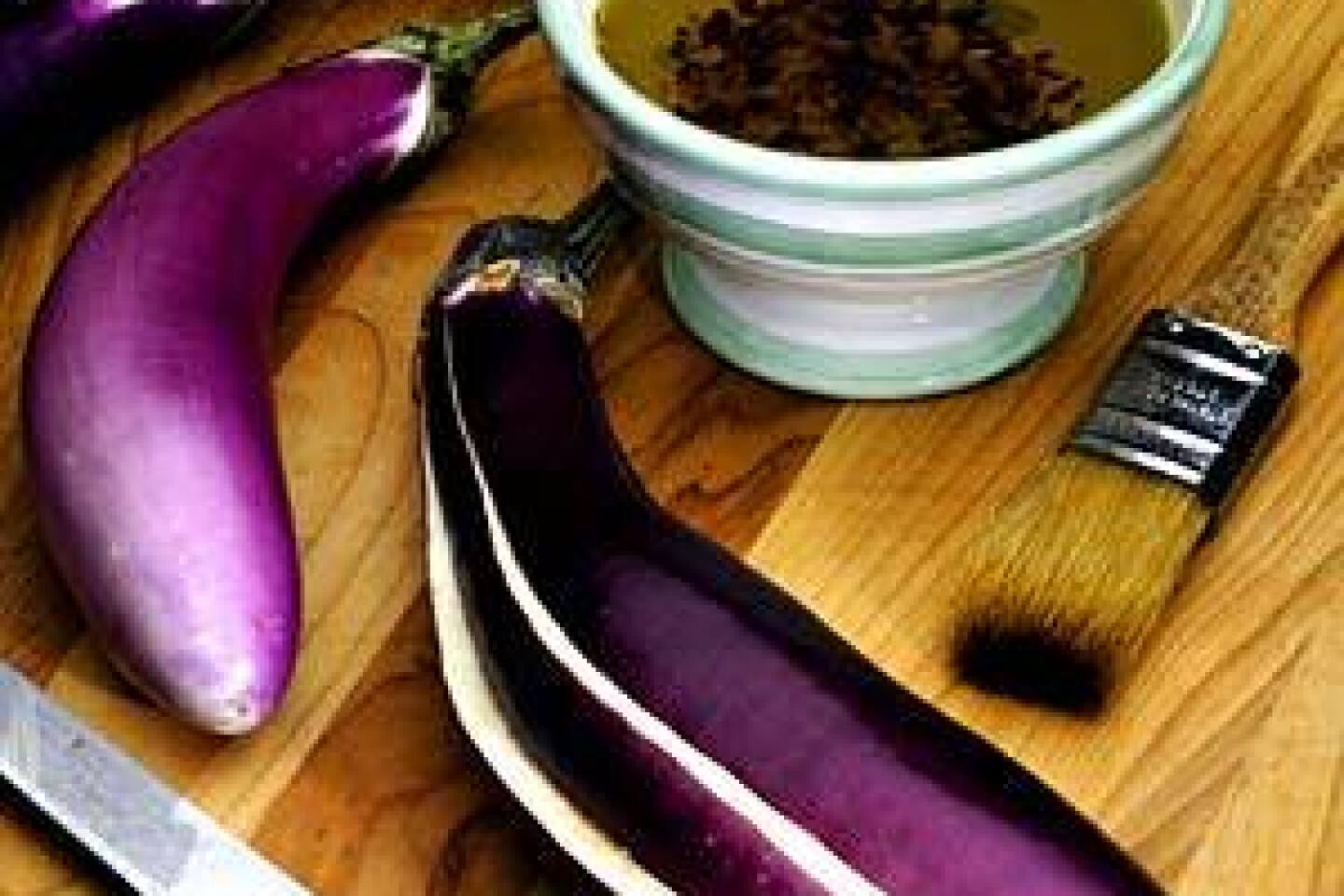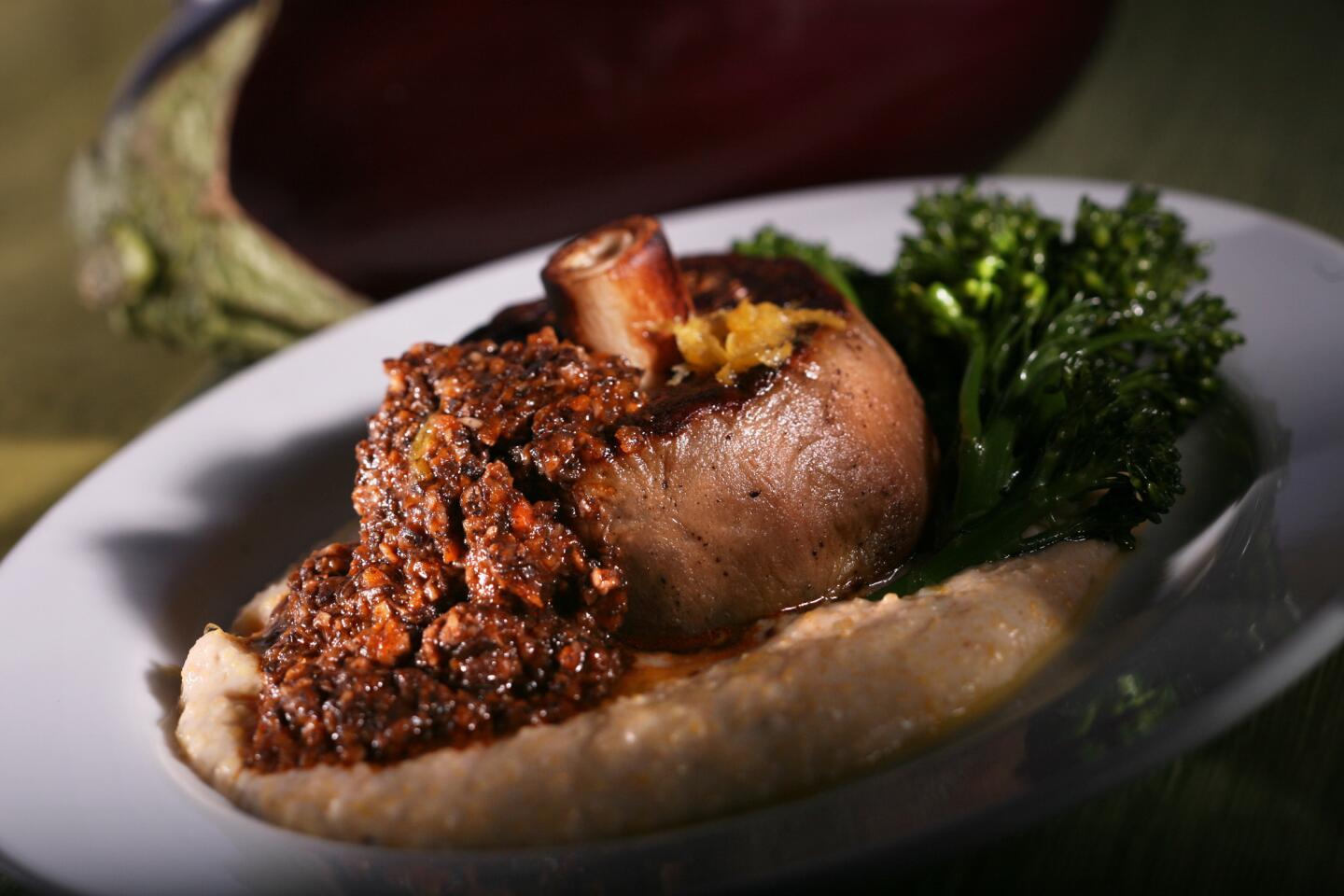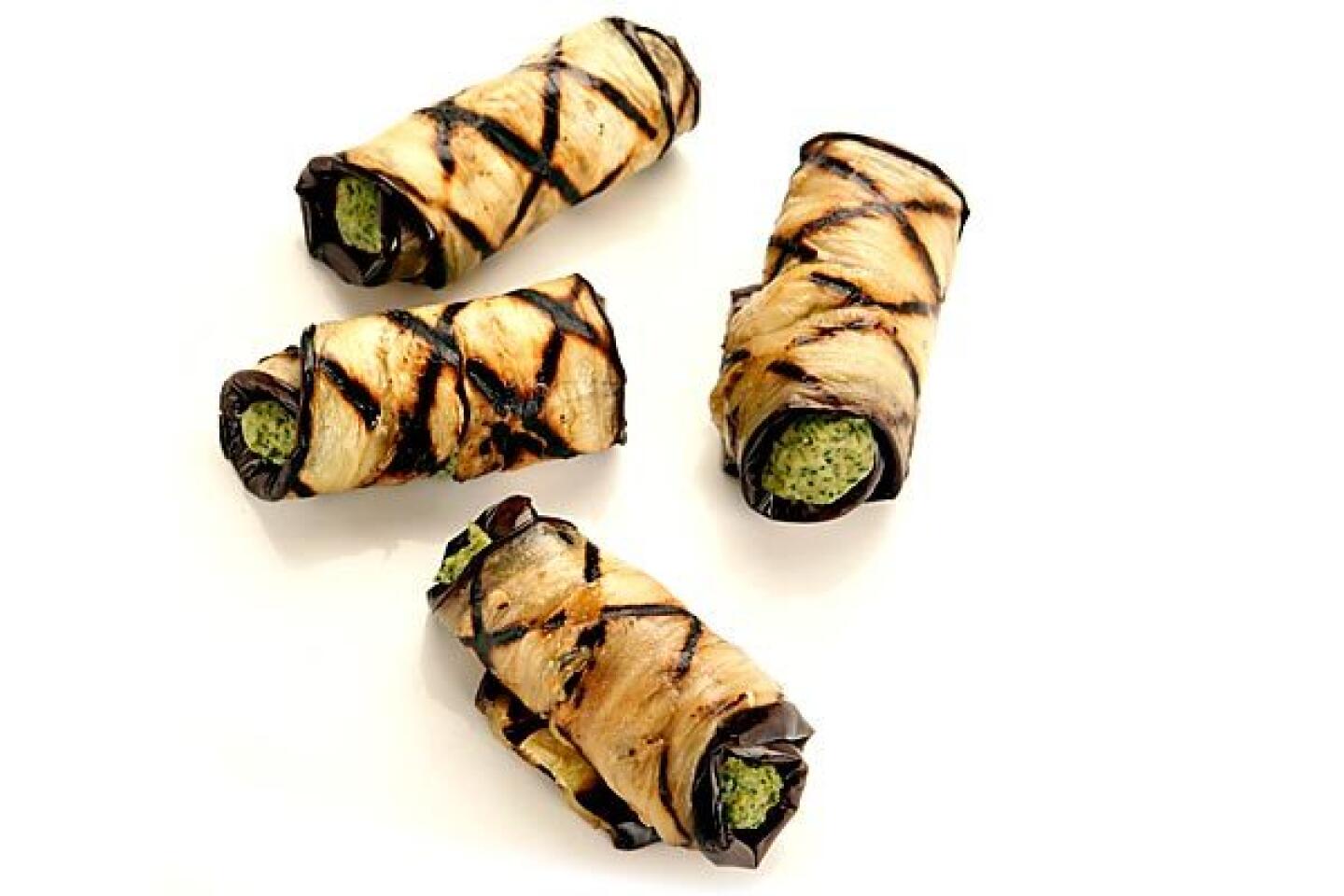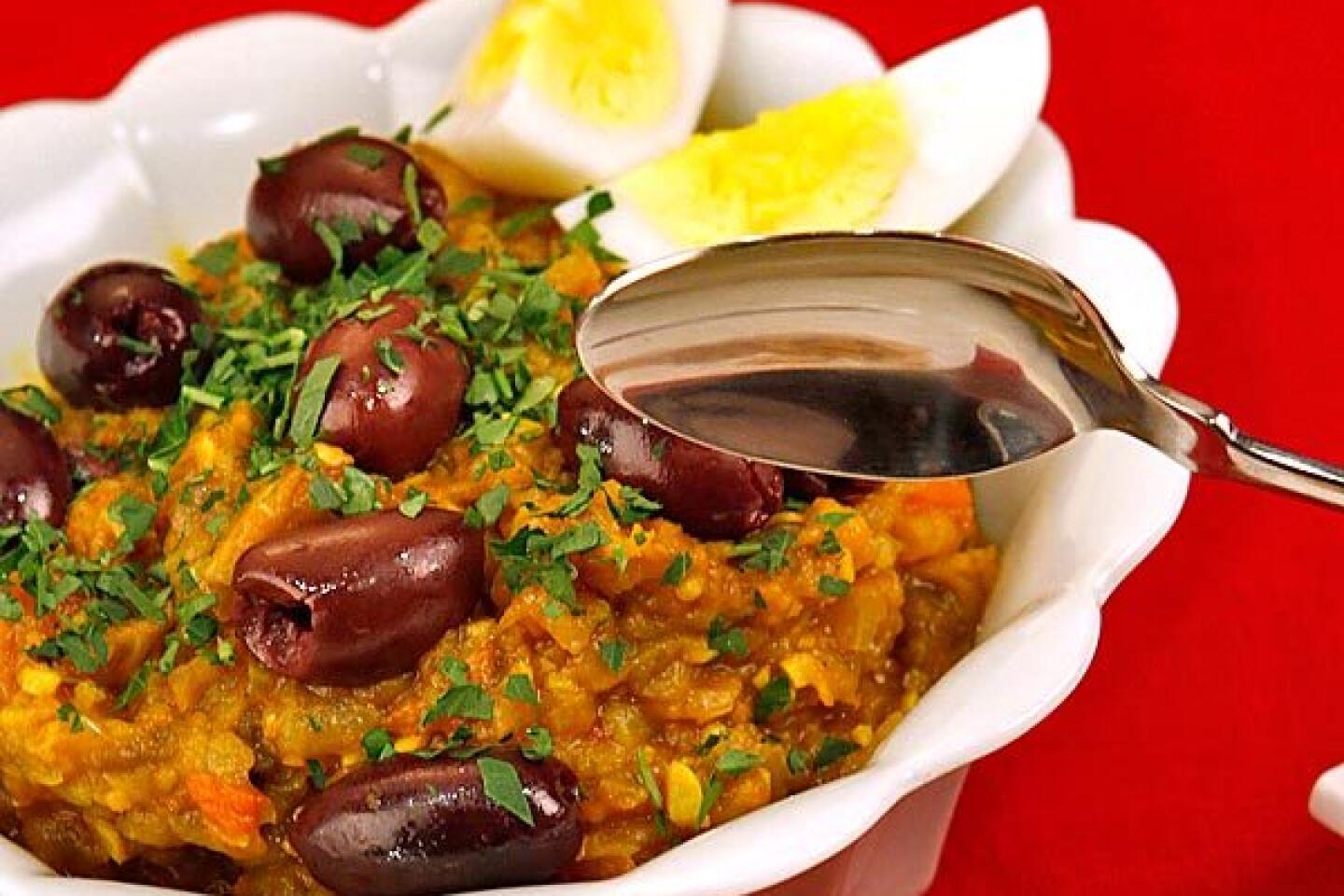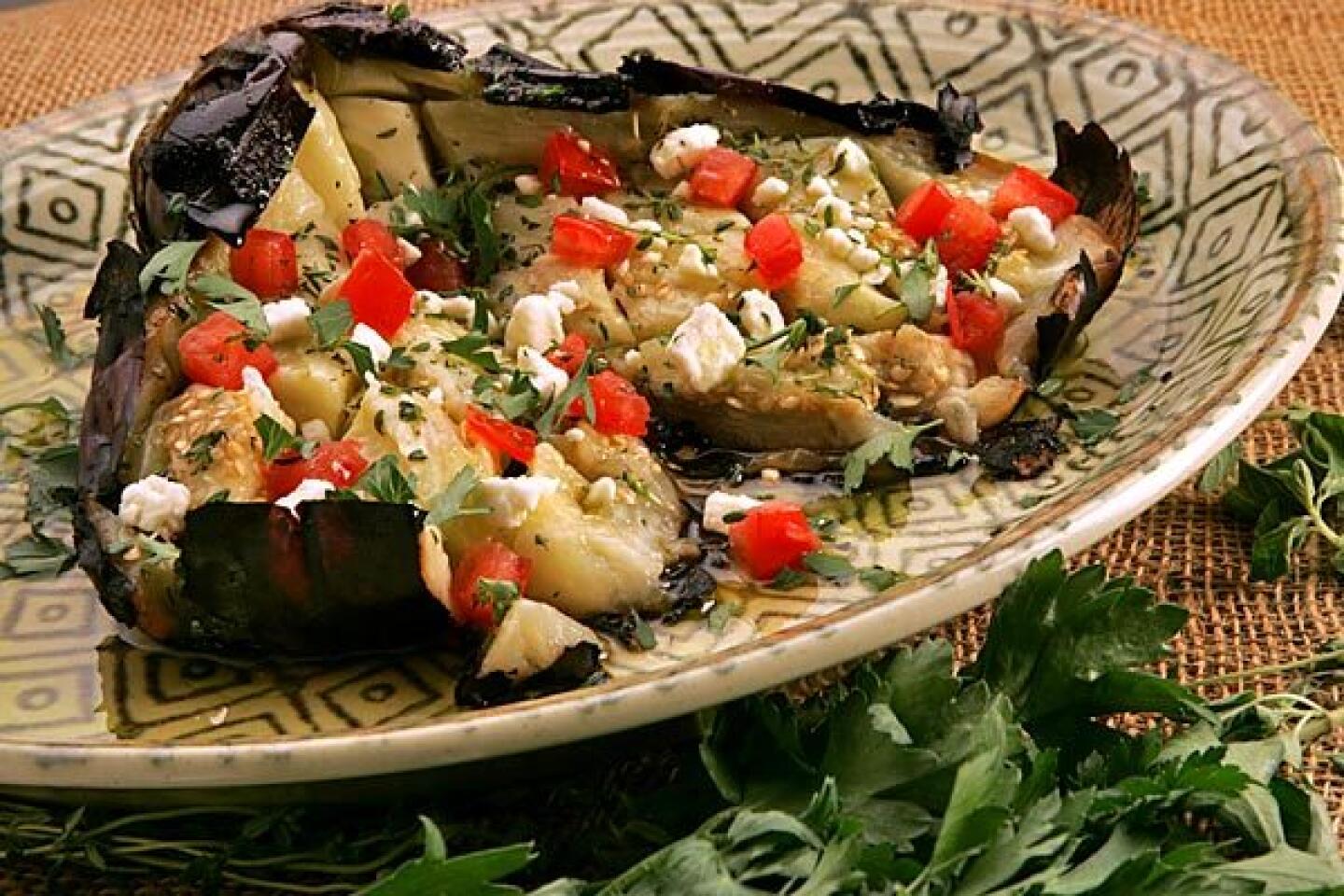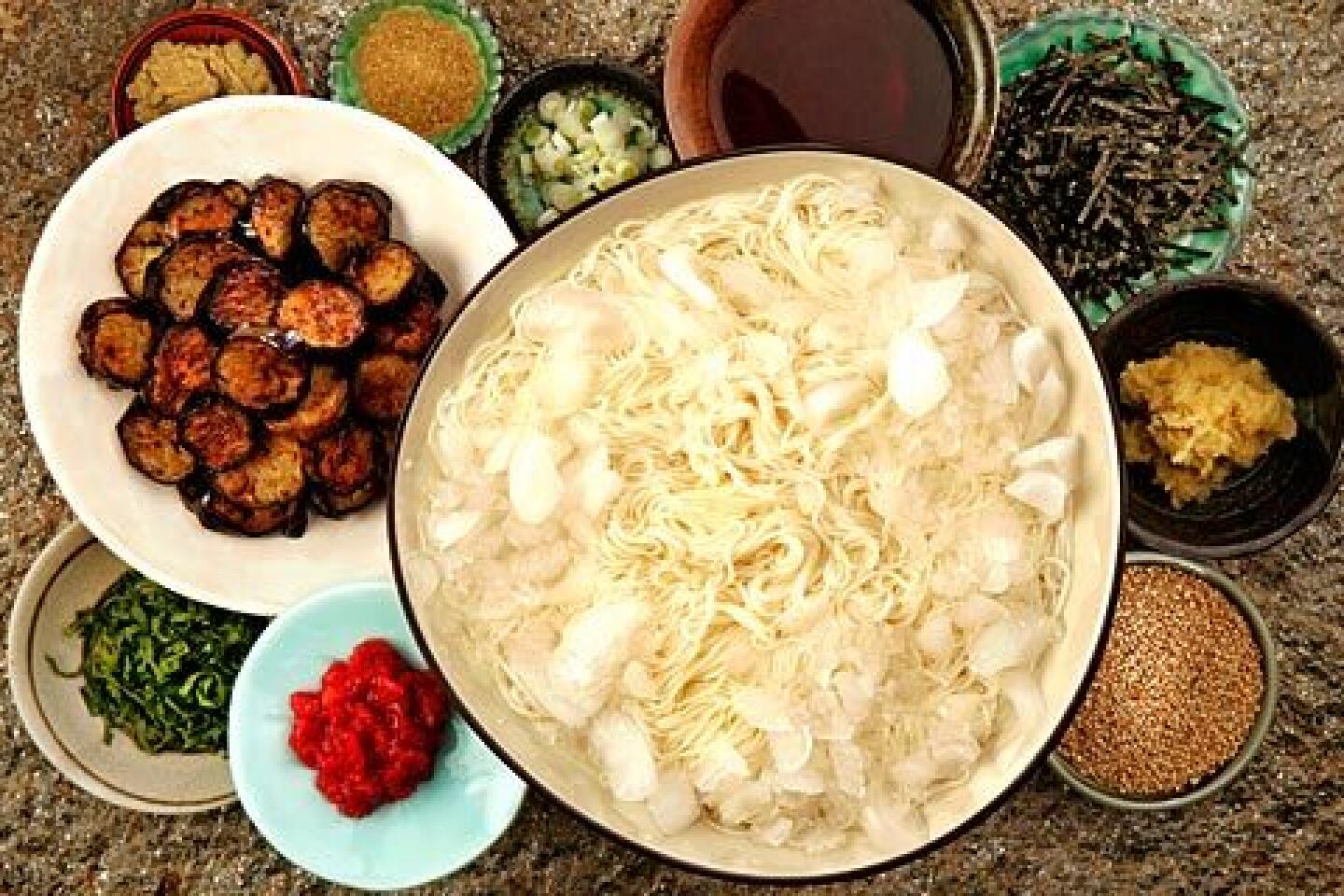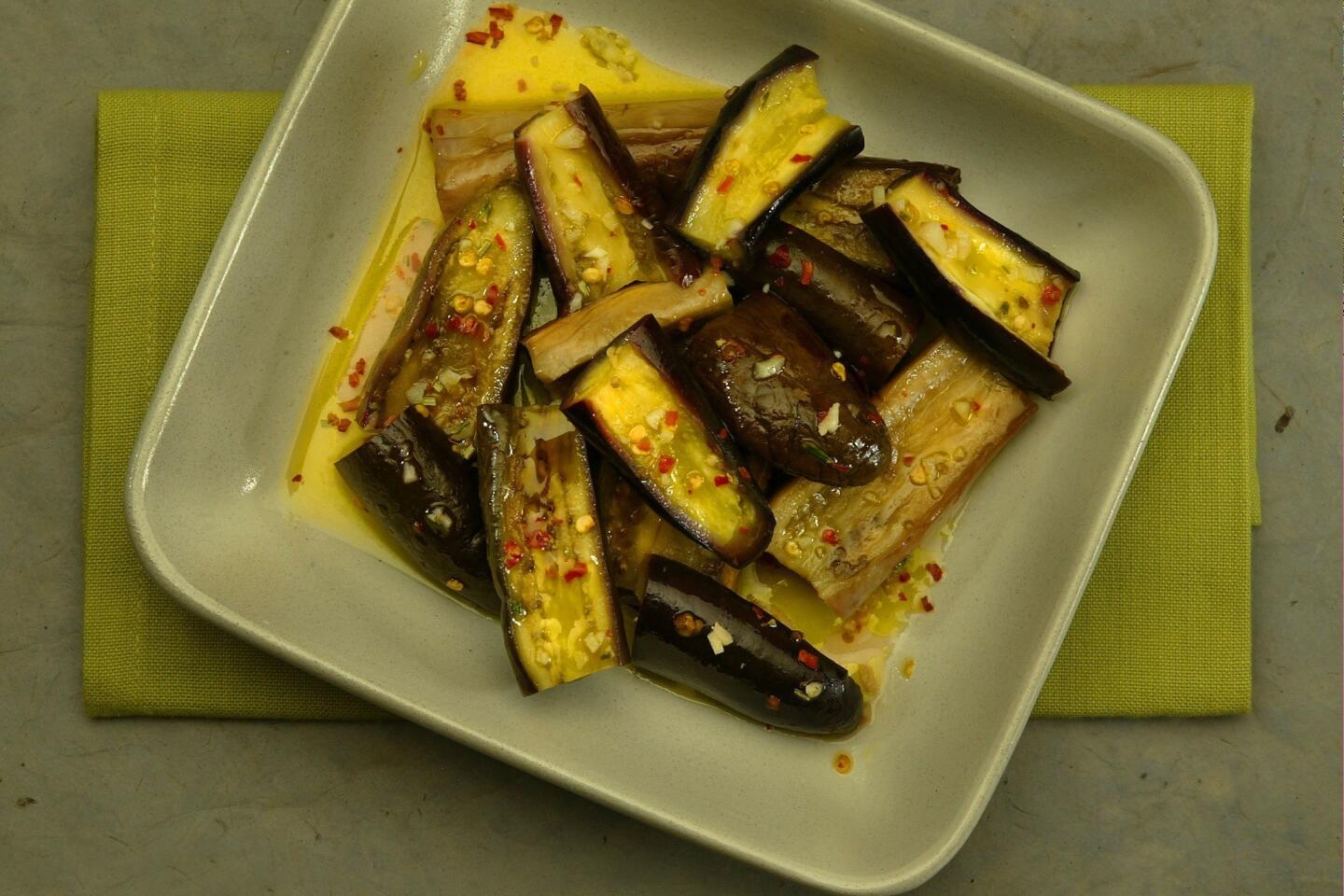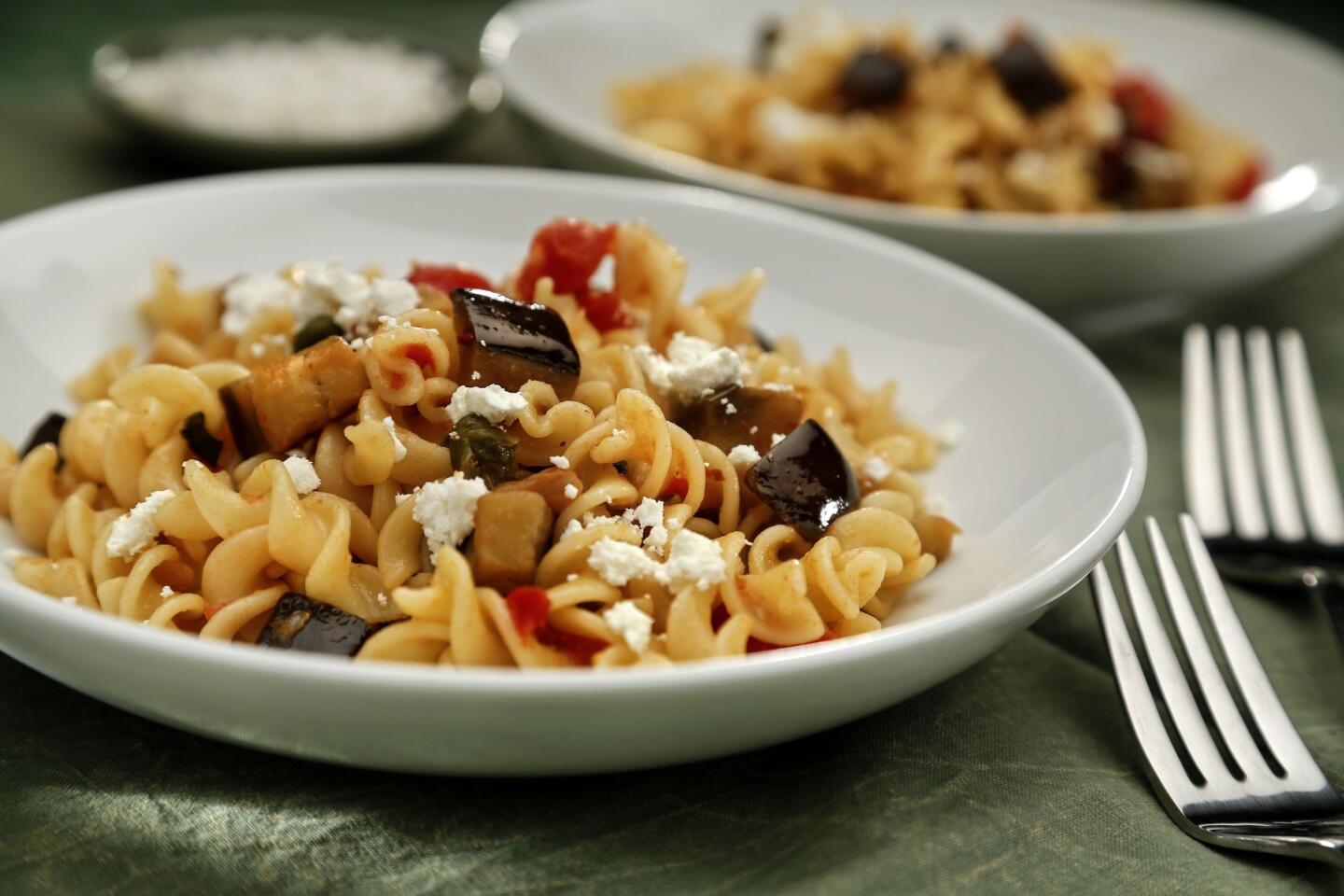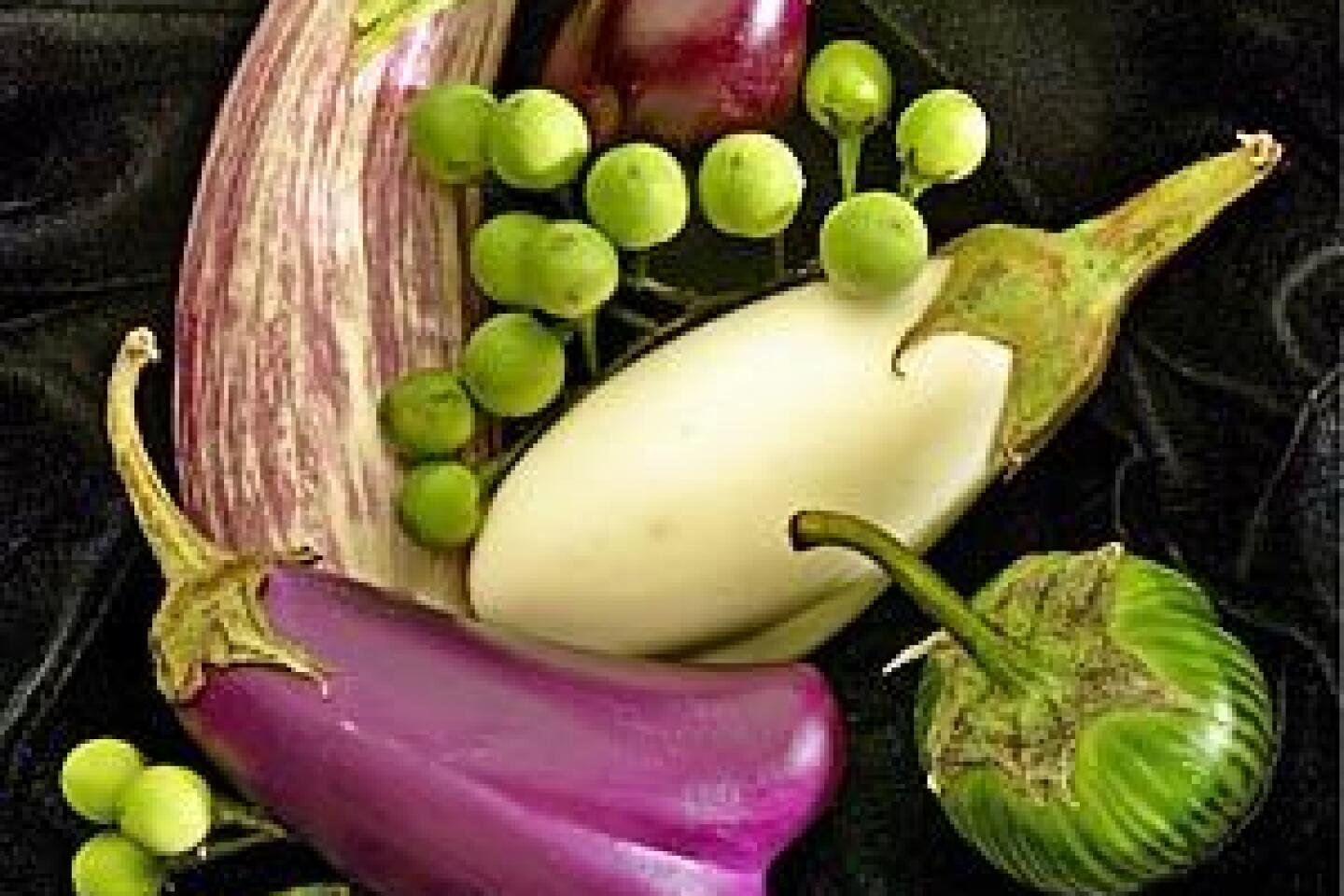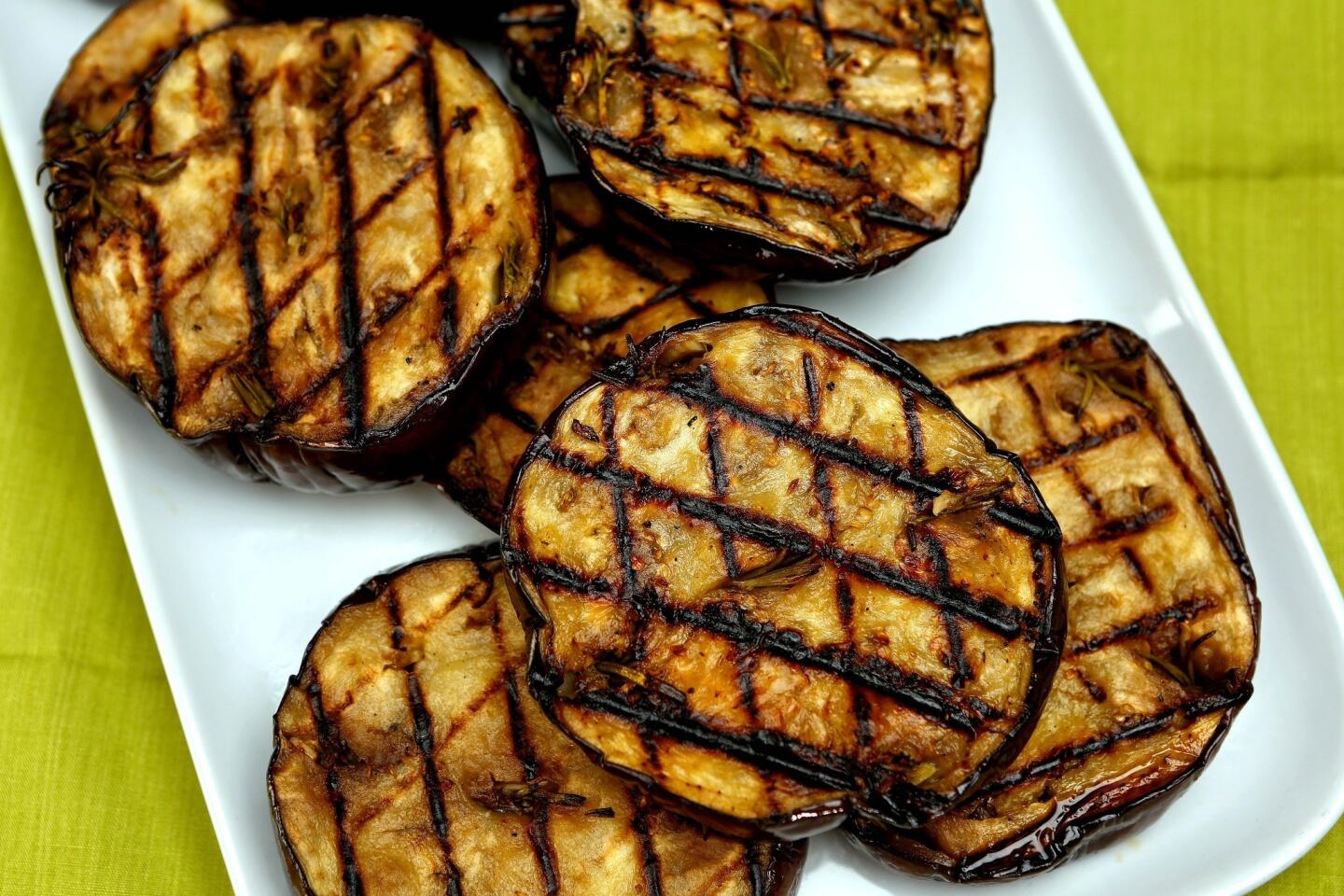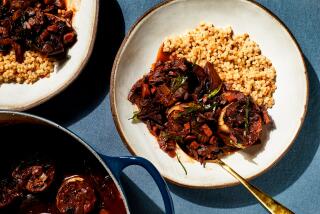Got eggplant? 12 recipes you’ve got to try this summer
Visit a farmers market this weekend and you’ll see eggplants of all shapes, sizes and colors, from creamy white Ghost eggplants about the size and shape of a finger, to midnight purple Black Beauties that seem nearly the size and shape of a bowling ball.
For the most part, they taste the same. The main difference among the varieties is texture.
Eggplant can be firm, even slightly stringy, or it can be creamy. This can be hard to predict, although generally the familiar black globe eggplants are the most fibrous while the slender Asian eggplants are silkier.
How to choose: Look for eggplants that are firm, even hard to the touch. There should be no shriveling or soft spots. Also check the calyx (the green leaves at the stem end); it should be fresh and green, not dried out and brown.
How to store: Oddly enough, eggplants are tropical fruits. It’s best to store them at room temperature, at least for a day or so. After that you’ll have to refrigerate them before they get too soft, but you don’t want to do it for too long, because they suffer chill damage fairly quickly, creating soft spots.
How to prepare: Many cookbooks tell you that eggplant has to be salted before cooking. That’s a great idea if you’re frying it, but pretty much beside the point otherwise. If you’re going to salt the eggplant before frying, cut it into cubes or slices, salt it liberally on both sides and arrange it in a colander with some kind of weight to press it. Leave it for at least an hour, then rinse and pat it dry. The salting doesn’t change the flavor, but it makes the texture much silkier.
ALSO:
Three out-of-control cheeseburgers
Dine at RivaBella with Gino Angelini and Russ Parsons
More to Read
Eat your way across L.A.
Get our weekly Tasting Notes newsletter for reviews, news and more.
You may occasionally receive promotional content from the Los Angeles Times.
